#fairytales reinterpretation
Text
Huh... I just discovered there was a recent French book that is a Hansel and Gretel retelling... that takes place in Brazil and is called "Hansel and Gretel and Saci Pererê"

The story is that Hansel and Gretel are now children of a gold-searcher living in Brazil... One day as the hungry children wander in the woods they meet the Saci Pererê, who decides to takes them on a magical adventure through time, to discover several of the great historical figures of Brazil - with food and sweets being a running theme unifying the whole book... At least that's what the back cover says.
@ariel-seagull-wings @themousefromfantasyland
EDIT: Wow okay... so apparently this is but one of an ENTIRE series of books centered around traditional European fairytales doing a crossover with either fairytale characters of non-European stories, or folkloric beings of Europe not usually seen in literary tales. Beyond the one above we have...
Donkey Skin and the Tanukis

Beauty and Ganesh
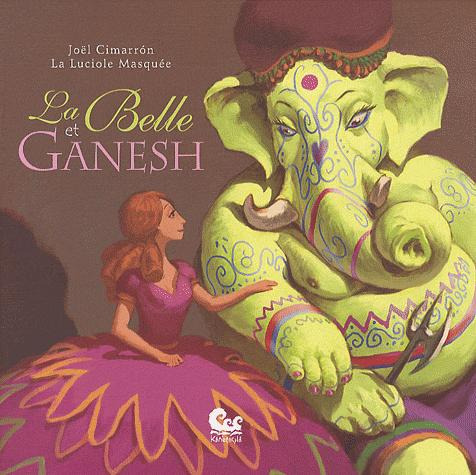
Red Riding Hood and the Chinese Dragon

Bluebeard and B'rer Rabbit

Cinderella and the Fire Bird

Little Thumbling and the Minotaur

Godilocks and Jean de l'Ours

Snow White and the Korrigans
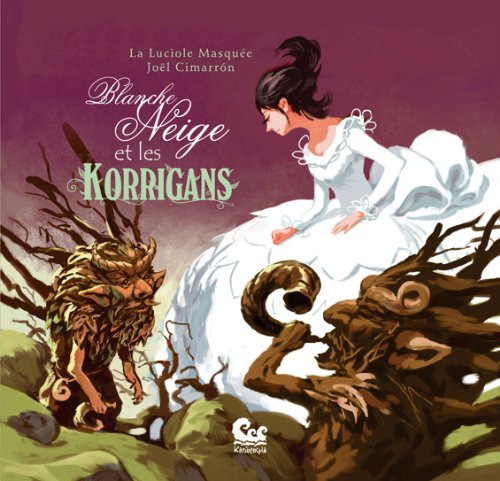
The One Thousand and One Nights of Sleeping Beauty

Wow... Just wow. I definitively need to get my hands onto one of those
#fairytales#fairytale adaptations#fairytale crossovers#fairytales reinterpretation#fractured fairytales#french things#french books#fairytale crossover
24 notes
·
View notes
Text

chang'e, the jade rabbit and the immortal potion 🌙 🐇
#class assignment where we were to reinterpret a folklore / fairytale / myth and also highlight a specific brand for accessories#it was a fun assignment :>#original#chang'e#jade rabbit#original art#(no idea if this could be considered fan art for a myth? lol)#becki draws stuff n stuff#rendered
33 notes
·
View notes
Text

#artists on tumblr#ai artwork#alternative#dark fantasy#the Brothers Grimm#reinterpreted fairytale#horror art#“Uptown With Hansel and Gretel”
18 notes
·
View notes
Text
Which version of this do you prefer?

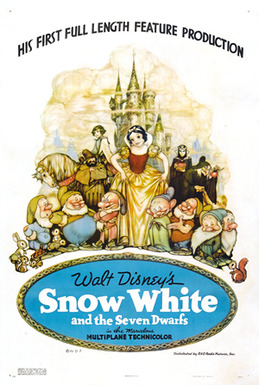



#the huntsman ones are the ones that seem to be most obviously a 'reinterpretation'#but with fairytales they pretty much all are so I kind of opted to just forgo the extra label here#snow white#snow white fairy tale#fairy tales#grimm's fairy tales#snow white and the seven dwarfs#snow white 1937#snow white 1987#snow white and the huntsman#mirror mirror#mirror mirror 2012#films#animation#animated films#polls#tumblr polls#adaptation polls#disney's snow white#disney#disney movies#snow white disney
2 notes
·
View notes
Text
the libido during your period feels like a religious epiphany and the libido during ovulation feels like a fairytale
3 notes
·
View notes
Text
love neverafter. ooooooooo the horrible lovecraftian nightmare of metatextuality
#grimdark edgelord reinterpretations are ruining fairytale characters’ liiiiiiiiiiiives!!!!!#.txt#d20
0 notes
Note
Do Jewish people have their own fairy tales? Have they ever been published in books?
We absolutely do!
I wouldn't call them fairy tales, though, we call them Midrash, Aggadah, Chassidishe Meises, and folk tales, among many other names. They range from fairytale-like stories with fantastical creatures such as the Ziz, demons, vampires, ghosts, angels, and Golems, to stories about Jewish miracle-workers such as Shlomo HaMelech, Choni Ha'Meagel, and the Baal Shem Tov, to name a few. These stories range from historical accounts to parables to dreams, and they're all extremely important in Judaism and Jewish culture.
Every diasporic Jewish group has their own folktales, and we all have shared folktales regarding the Tanakhic era, and a lot of the Talmudical era.
Storytelling is very important in our culture, and every story is supposed to have a lesson within it. There's a concept in Judaism called "Ma'ase Avot Siman L'Banim", which translates to "A tale of the forefathers is a sign for the children". This means that every story that's was passed down and remembered and recorded was recorded for a reason, to be a lesson for the descendents who learn from it in the future. That's why seemingly inconsequensial happenings are recorded in the Tanakh, because they were recorded for a reason. We may not know the reason yet, but we can reinterpret and derive meaning from all our stories.
Publishing books and written text is extremely important in Judaism, and all these stories have been published multiple times over centuries, sometimes even millenia, in many different version and iterations. I couldn't even begin to try and list all of them, but I encourage you to browse through the links I've included for a good picture of the diversity and beauty of Jewish folk tales.
888 notes
·
View notes
Text
I think my issue with a lot of YA and just like...fantasy fiction in general...is that much of it is written from this perspective that the folklore and fairy tales they are borrowing from are just these "fun little stories". That these stories don't hold any inherent spiritual value or express a complex world view- or, if they do, it was a superstitious and backwards worldview. Something from a bygone and less enlightened era. Something from a stupid and unscientific people.
It shows in the writing because these kinds of books seem to be almost self congratulatory in the way they've "reimagined" the source material, or the way they've emphasized the "grittier" elements of a classic fairy tale.
It's an unfortunate mentality that not only leads to uninspired stories, or the dismissal of a beautiful human inheritance as preposterous, but also, like- casual racism and colonialism? Because people seem to think that if their myths and folk tales are "fun little stories", then other cultures' myths and folk tales must also be "fun little stories", and that they are equally up for "reinterpretation".
Don't get me wrong. I'm not saying that people shouldn't be inspired by folklore, or fairytales or use them in imaginative ways. I'm just saying that I wish, more often than not, it was coming from a place of respect towards those stories and the cultural/ spiritual values they carry, rather than treated as a quick backdrop for lazy plots and world building that only seem expansive and interactive due to their instant familiarity.
#magic#folk magic#spirituality#folklore#literature#ya fiction#fiction#fantasy#witchblr#witchcraft#wizards#sorcerers#history
314 notes
·
View notes
Text
Part 1

When @vespersposts put together an event [𝐿𝑜𝑣𝑒 𝐵𝑢𝑚𝑝𝑠 ✘] with the theme "How I met you", I really wanted to participate but couldn't think of anything at first... I write canonverse longfic, so my ships can't actually have a second first meeting... except, a couple of them did! I remembered my convoluted fairytale fic, which is a fantasy AU within my canonverse longfic, because it's just a dream. So, I decided to draw KagaKuro's first meeting from that fairytale fic, as a comic.
I'm not completely happy with how I drew this. My drawing is still (always) so inconsistent, and I had too long breaks between drawing, so I made mistakes like forgetting where exactly my angle on the characters had been and for some reason being too stupid to check... but oh well, it's readable. And I do like the atmosphere.
I'll try to introduce this briefly and make some sense of it.
I drew this because it almost works out of context. You can read it as a standalone, I think, you just won't see the full extent of everything, where things came from and where they're going. I think what you need to know is that the idea of this story is reinterpreting/reliving your past, but it's not just "I dropped these characters back into a metaphorical dream version of the past", because it's also important that it isn't really the past. It's the present under the mask of some past events. The years aren't undone just because the characters momentarily don't remember who they are. That's why the past events are not a direct translation into a fantasy AU, it's slightly more complicated. The sense of "this is actually just a character meditating in the present(=third year of high school)" is kind of crucial to the story, even though no one in the dream knows it's a dream. It's about trying to make sense of what you missed. Things that you thought you knew, mistakes you thought had already been understood to their fullest extent, but weren't. In other words, everything that has happened after the events that are referenced in this comic, still affect the characters' decisions and what they say.
So, when the characters seem a bit off, or you can't see where they are coming from, it's probably because you missed about 800 000 words of character development. (Unless you've read my TOTverse of course.)
Okay, I definitely don't deserve praise for putting that simply and concisely.
I guess the elephant in the room is that in this dream fic there's a genderbent version of Kuroko, but it would be way too complicated to get into the narrative and meta reasons why that is relevant in this dream, without explaining the whole story, so, you're just going to have to take it at face value.
I hope you enjoy reading. ♥︎
(Read from left to right.)
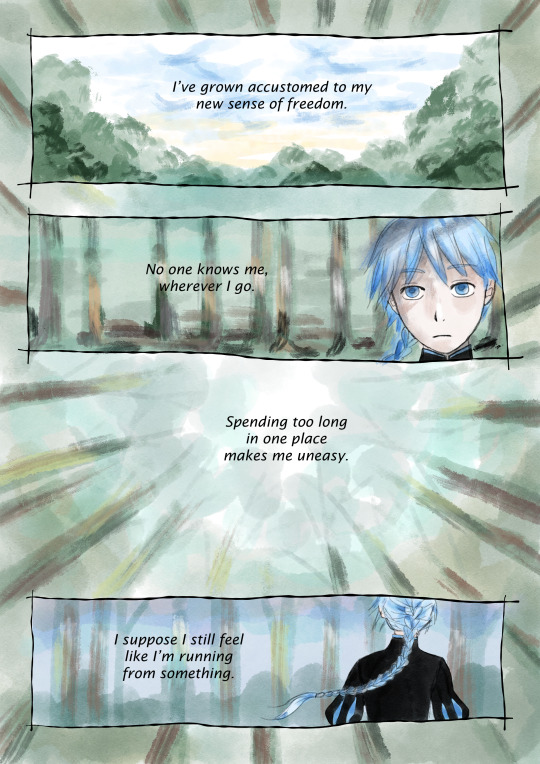

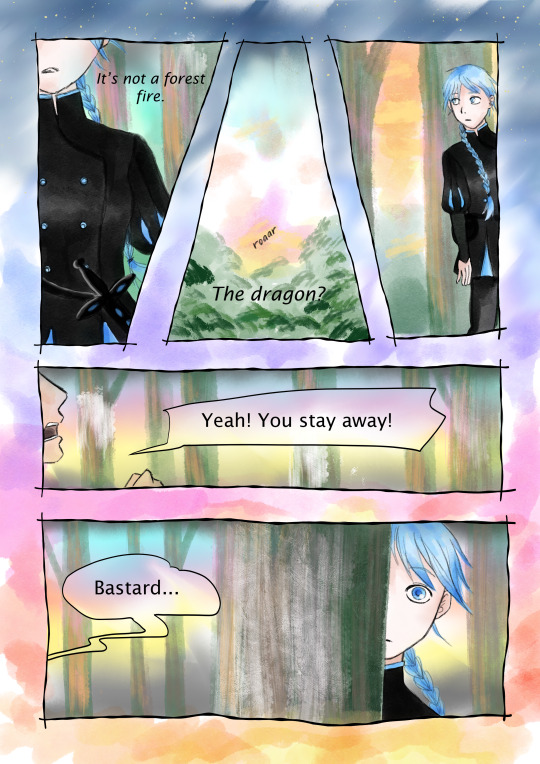
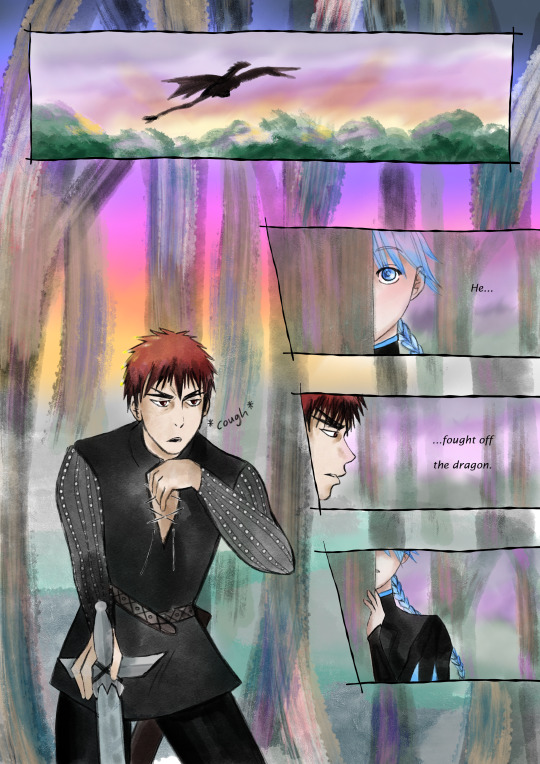


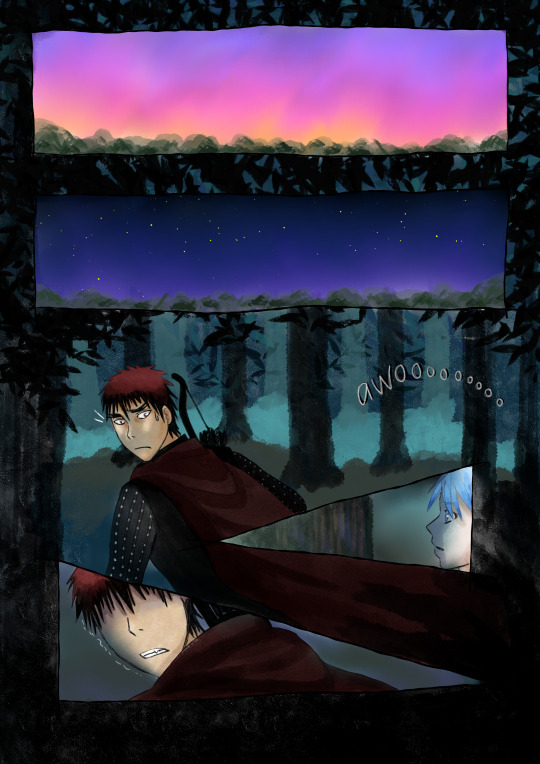
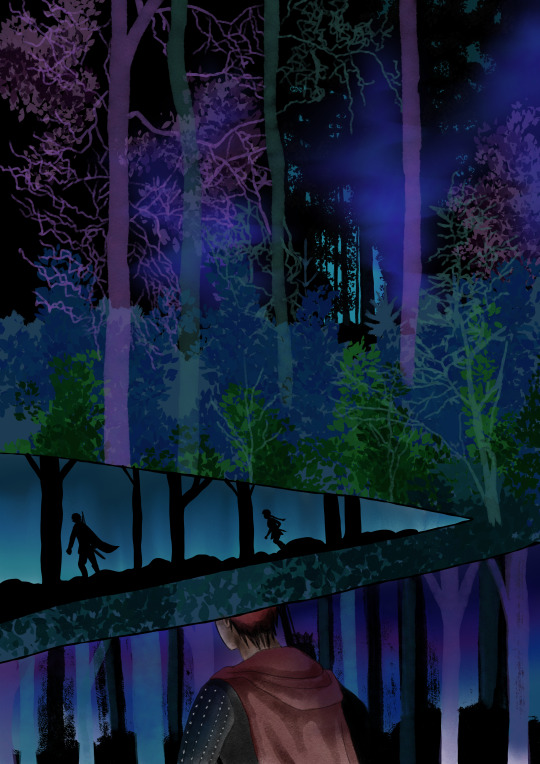


(To be continued.)
#it's just a tiny bit late in my time zone but happy birthday kuroko#knb fan art#kagakuro#[𝐿𝑜𝑣𝑒 𝐵𝑢𝑚𝑝𝑠 ✘]#sfw
20 notes
·
View notes
Note
https://www.tumblr.com/olderthannetfic/738716716223365120/so-i-probably-got-this-completely-wrong-because-i
I’ve read some good litfic “retellings” that were so loose and reinterpretive I’m not sure I would’ve known they were retellings of X if they weren’t labeled that way or the characters weren’t named certain things, but they engaged with the original work *thematically* in a way that was still really thoughtful and added things to the conversation about it, and got me thinking about the original work in a new way. To me, the issue is more when people kind of miss the thematic meat of that original story rather than if they recreate every plot beat or character arc exactly. The question I think a lot of fic writers fail to ask is “why THIS retelling specifically, and why in THIS other fandom?”
And I’ve honestly seen more slavishly faithful in a plot/character way “retellings” that fall into that, than more reinterpretive ones. Ones that follow it more loosely, to me, are usually written by people who have thought a lot about why they should put this element in there and not this other one, etc. (A lot of mainstream media “retellings” also do this; for instance, Clueless recreates a lot of stuff from Emma that works for its 90s setting or its set of characters, but skips some other stuff that doesn’t, like the whole Miss Bates storyline, or by making the Frank Churchill equivalent gay rather than in a secret engagement. And I think it works a lot better in recreating the “spirit” of that novel than when I’ve seen other “modern” Austen retellings try desperately to make some of the more dated aspects of her stories work in a modern society that just doesn’t have the same hangups about women who aren’t married by X age being sad pitiful old maids, about any amount of premarital sex dooming not just a woman but her entire family, etc.) I’m sure there are others that aren’t like that, but that’s what I’ve seen. Like at the very least, it’s a good sign to me where a fic writer is willing to invent OCs for certain characters from the story being “retold” where none of the canon characters in their chosen fandom fit into that role, rather than try to shove everyone into one of those molds no matter how much it doesn’t work.
But in general I think it’s those kinds of retellings, that are just recreating some other story but with their blorbos from this other show or video game or whatever, that puzzle me. I often wonder also why THIS story with THIS fandom because it often seems to be with relationships where something about them that is pretty fundamental to their appeal is not possible with this story framing. For instance, I’m in a fandom now where my OTP is one where *in canon* a lot of how their relationship grows is through conversations and debates, and there’s someone right now writing a retelling of the fairy tale The Wild Swans with them, where they meet after one of them has already taken the vow of silence from the original fairytale. So that’s already fundamentally changing a key part of the bond between those characters. Why would you write THIS fairytale with THIS fandom? Maybe that person will answer it eventually, but so far it seems to be more about “writing this fairytale with my blorbos” than anything else.
I mean, I get why… someone is currently Obsessed with that story and they’re also Obsessed with this fandom/character/ship/etc. so it’s the classic fandom thing of Two Things I Like Together! But along with being tired with stuff that’s just Two Things without having any other reason to be…. Idk, a lot of it just feels like it’s another form of ATG, where it’s less about really engaging with these characters as they were written and more about fitting them into a preexisting mold by any means necessary.
AUs of any kind, including retellings of any story, need to work with the characters as they are, and not just feel like they could be written fundamentally the same about any fandom with just the character names changed.
Tbh, there’s a long enough tradition of this with “original works” where they do retellings of classic stories, that you can look there for examples of how to keep the essence of the original story while also having it fit the ones from the fandom you’re writing it for. We just got out of a season of the year where half the shows on TV do riffs on a Charles Dickens novella from over 150 years ago. Look at how Christmas Carol specials (the good ones, anyway) are written and how they still fit within the original show and also riff on the original work in a recognizable, thematically meaningful or funny (or both) way, and that will give you guidance on how to do retellings in your fanfic that don’t feel superfluous.
--
18 notes
·
View notes
Text
Recent visually beautiful and generally watchable Russian fantasy movies
(because I start forgetting they exist at all)
Ironically, all of them are adaptations of books/comics.

I Am Dragon / Он — дракон (2015)
This movie is a very free adaptation of the novel "The Rite" / "Ритуал" by Maryna and Serhiy Dyachenko (Марина и Сергей Дяченко). It's a reinterpreting of an ancient tale about a maiden, a hero and a dragon. I don`t like the novel because it's very postmodern, wracks the typical fairytale plot and hurts my escapist feelings by ugly reality, but the movie is pretty fairytale-ish and nice.
Firstly, it is visually beautiful and represent Slavic pseudo-medieval lore the way it should have always been in Slavic fantasy.



Secondly, as a love story between a monster and a maiden, it has got A PLENTY of tropes I'm usually looking for in Chinese dramas, so I understand very well why it was pretty popular in Asia.
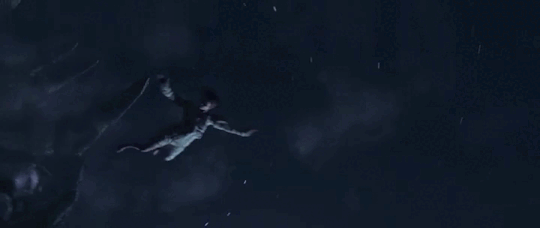

Thirdly, when I said it's visually beautiful I wasn't joking. The main hero is played not by an actor, but by a male model, who is shirtless all the time (and sometimes pantless) and has a very fit and good-looking body. It's something unbelievable that someone in Russia made a movie to please women's eyes! Really, it's insane!




The folk-rock band Мельница wrote an insanely beautiful song "Обряд" (The Rite) for this movie (more matched to the book plot, though), but it was never used as OST, which is a shame. The song is about a black sheep girl, who is denied by society and asks a dragon to come for her and to take her away, because the dragon is denied by this world just like her. You can listen to it here. The band also has a song "Змей" (The Wyrm) (based on Lev Gumilev's poem), which is more accurate to the plot of the movie: the wyrm kidnaps maidens to make them its wives, but they are all dying during the flight; at the end of the song a hero-knight is ready to shoot it in order to stop it. Listen to it here.
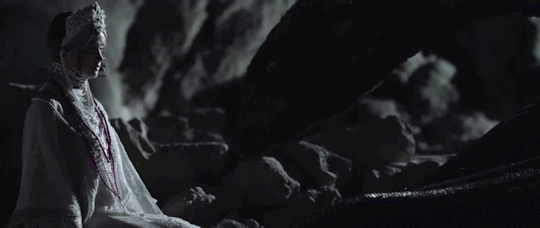
It ends with HE, which is better than the book's obscure ending, so it is pleasure for me to rewatch it till these days.

Major Grom: Plague Doctor / Майор Гром: Чумной Доктор (2021)
It is an adaptation of Russian comic series "Major Grom" by Bubble comics. I am traditionally not very happy with the source material, but it is very good reworked to be the screen play of this movie.
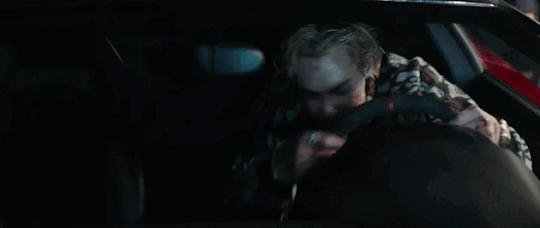
It's very beautifully made in terms of director's, cameraman's and screenwriter's work, which is a rare thing for Russian movies. Also, the actors are young and handsome, especially the villain, which is a rare thing not only for Russian movies, but for the current Western movies, too.
It has got a lot of allusions to Russian reality and a lot of beautiful views of Saint Petersburg, the second capital of Russia and one of the most beautiful Russian cities.
And it has got some unusual visual solutions that turn it into a comic it should be.
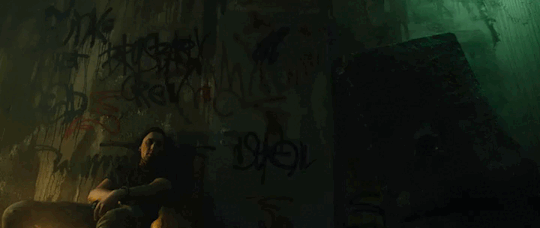

The plot revolves around a mysterious serial killer (kinda bad Batman), a black sheep police officer and Russian Mark Zuckerberg (kind of). Mark Zuckerberg is the best guy of this movie and I like him a lot! Серёёёёжа! 🧡🧡🧡
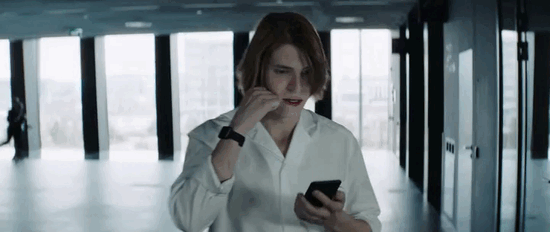
This movie wasn't popular in Russia because of political situation in the country by the moment of its release (the both sides found out in there something insulting for them and banned it), but even if it has something like that, I honestly didn't pay attention to it.
It's just a nice blockbuster with a tragic and handsome villain. The villain also has got his own BL-drama (in the comics they are really lovers, it`s as obvious as it could be shown in a Russian comic).
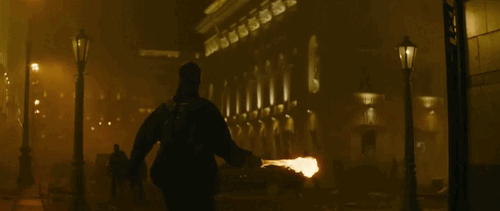
By the way, the villain is hot, insane, ruthless, sensitive and suffering. How does he contain all of this character treats in one personality? you may ask.
He doesn`t. He has dissociative identity disorder, I would answer.


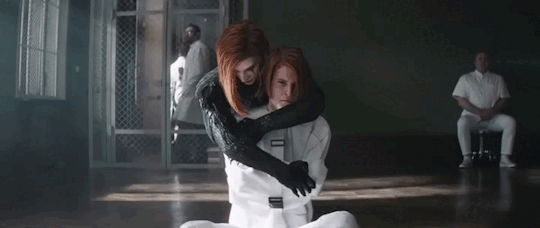
I don`t know if it works by now, but some time ago you could watch this lovely movie on Netflix.

The Master and Margarita / Мастер и Маргарита (2024)
This is a loose adaptation of Russian classical novel "The Master and Margarita" by Mikhail Bulgakov. I genuinely hate this book, but the adaptation reinterprets it, divides it into very interesting layers and makes it understandable and beautiful.


It`s layered, so it will probably be hard to understand what layer are we currently on if you are not familiar with the original story. The first layer is an ugly Soviet reality, the second layer is a plot of the novel that the main hero is writing, a story within a story. The third layer is the insane intertwining of the first two layers.
On the reality layer the Master loses his job and freedom because of friend's denunciation and becomes star-crossed lovers with a married woman. On the novel level he meets devil, who visits Moscow by chance, and the devil gives him and his woman opportunity to live their lives being free from everything that usually tortures people IRL. Somewhere among those layers is a little plot about Jesus and Pontius Pilate.
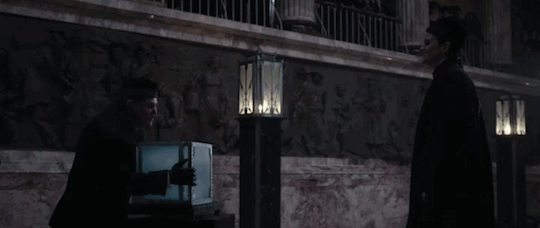

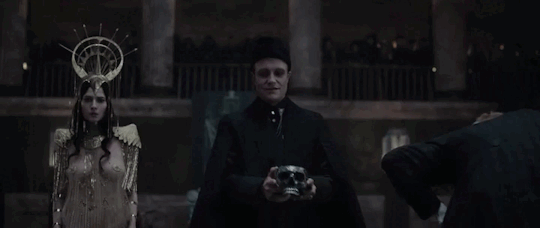

The movie is visually beautiful. Although it feels pretty anti-Soviet, Soviet visuals of the movie are gorgeous. There were used the Stalin-times concepts of Moscow of the Future, the CGI buildings in frame came from the real architecture projects of those times. The Stalin Empire architecture style and views are typical for Moscow (but as I know, ironically, this all was shot in Saint Petersburg).
It seems to me that this movie is heavily stuffed with visual allusions to the Western works: devil's escort looks like bunch of Pennywises, Margarita is Enchantress from Suicide Squad I, the scene of blood dripping is from Blade I etc. Usually, when I see it in Russian movies, it feels like plagiarism because I can recognize the reference but there is nothing except for these references . But here we have got the plot, so the allusions work as allusions and don`t irritate me.
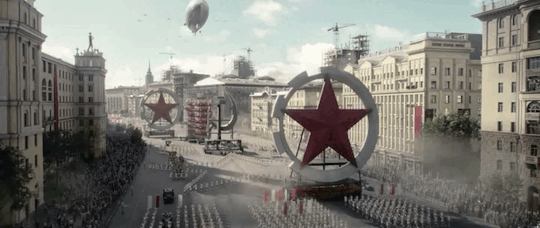
The movie is dark, disturbing, uncomfortable. It really makes you feel as if you watch devil and his escort marching around you; they ravage, kill and destroy everything and you can only breathlessly, helplessly and in fear watch them. The German actor playing devil is insanely good. He stole the movie and I understand why it should have been named Woland (the devil's name) instead of the current movie's name.
You may want to watch it, because it's very unusual in terms of plot and visuals experience, especially when you are not familiar with the book.
#movies#films#movie recommendation#fantasy movies#blockbuster#movie review#favorite movies#heroes and villains#comics#book adaptations#novels#SDaboutFilms#fairy tales#The Master and Margarita#woland#margarita#Major Grom: Plague Doctor#майор гром#сергей разумовский#sergey razumovsky#major grom#i am dragon#он дракон#риутал#мастер и маргарита#master and margarita#воланд
16 notes
·
View notes
Text
Since I am on the topic of these people that get a lot of criticism for their take on fairytales but still deserve to be kept around due to their influence, I want to briefly evoke Bruno Bettelheim's book "The Uses of Enchantment", known in France as "Psychanalysis of fairytales".
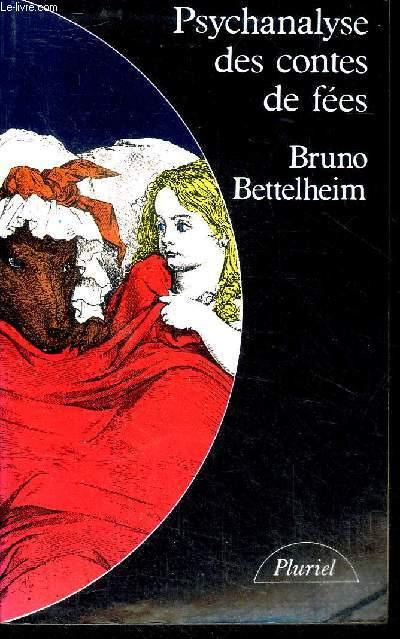
Note that I will not speak of the book itself or the reception of the book in English-speaking countries, but I want to talk about its reception in France and an impact it had on France. Today, numerous elements of the book have been debunked or criticized, coupled with many people misunderstanding the intentions of Bettelheim or misinforming about the context of the book or how it had to be read. As a result, today there is a tendency to crap on this book or laugh about it when we talk about fairytales analysis. However this book had a great importance in France when it came to "save" fairytales.
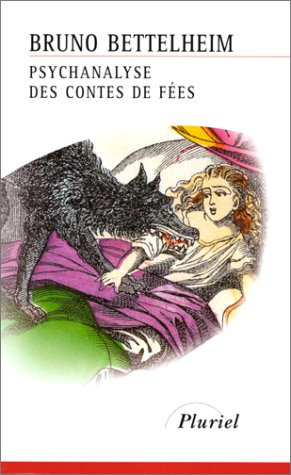
Before going into the general, as a brief piece of personal experience - which isn't exclusive to me, as others also shared this. This book actually was what got me into the analysis and study of fairytale. Or rather, when I read it as a pre-teen, it made me discover that... fairytales could have depths. Fairytales could have hidden meanings behind being simple children stories. It made me consider how these stories could be taken and reinterpreted as so many allegories and metaphors, it opened my eyes to a certain visceral, psychic, social aspect of these tales, and without this book I certainly would not have been into fairytales as I am today.
Not that this book is the ultimate resource of fairytale analysis - and the entire process of a psychological reading of fairytales is someting that exists but should not be taken into account when trying to explain them (fairytales being the produce of the encounter between literature and folklore). However, this book stayed a door-opening key for me, outdated maybe, overthinking stuff I guess, but that at least allowed me to glimpse into the "great beyond" behind these stories.
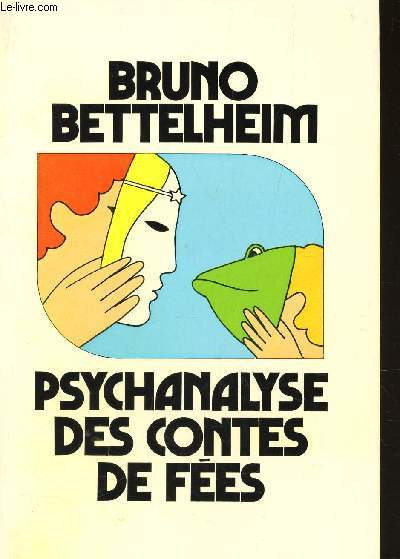
And now for my actual point... How Bettelheim's book saved fairytales in France. This is something I learned when studying the life and work of Pierre Gripari - in a book called "Pierre Gripari, un passeur d'écritures" by Inna Saranovska.
When Bettelheim's book reached France in the late 70s, fairytales were in a bad spot when it came to cultural authorities. Already fairytales had been reduced in people's mind to simple, naive children stories only good for making American cartoons (cough cough, Disney). But those of Perrault were still evoked and studied in schools (little schools for little children) because it was part of the heritage of France, of French culture, and the evolution of French literatue...
However what happened in the 70s? The very serious project of just burying fairytales was brought forward. The talks by politics and school authorities were simple: let us stop teaching fairytales to children in school, let's remove fairytales from school libraries, we do not have any use for them anymore, let them be forgotten. On one side, as I said, there was a discredit due to them being seen as silly children story, and thus no real pedagogic or "useful" chilren literature. But on the other side, there were very concrete and serious political business involved - fairytales were seen as antithetic, and opposed, to the principles of the modern Republic of France. Fairytales were seen as backward antiquities that went against what a great democratic nation should be. For example, people really did took issue in the fact that fairytales depicted monarchies, with kings as absolute authorities, and where a happy ending meant to end up prince or princess. For them, it was literaly teaching children to favor and idealize monarchy when they should rather learn about democracies and republics, and while it might seem silly today, it was serious back then and what almost led to the complete erasure of fairytales from school programs.
But then came Bettelheim's book. A book which proved to these folks that fairytales could be of a deep, psychological, social use to children. A book which taught these authorities to see beyond the "silliness" of these children stories or the "backward social message", and which told them how these stories could contain and express the deep fears, the secret desires of children, and help them grow up and deal with familial, social relationships. The book was a best-seller in France, and it completely changed the higher-ups opinion, and convinced tem fairytales should indeed be maintained in school - because fairytales were now "serious" due to being part of the very serious and praised domains of psychology and psychanalysis (which was all the fad and rage in the second half of the 20th century France).
And as such - no matter what you might say about the book's uality today - it can still be thanked for actually "saving" fairytales in France.

#fairytales in france#reception of fairytales#the uses of enchantment#bruno bettelheim#fairytale analysis#history of fairytales
243 notes
·
View notes
Note
hot take: allusions don't actually do anything other than an "oh their name is a pun for X or their outfit vaguely resembles Y that's cool I guess"
Narrative allusions can do more than just exist as a trivia.
There's a fascinating undercurrent about fairytales and myths and how they influence our society and tend to transform over time - RWBY could have easily touched upon that - especially once they added more ambiguous things like Maidens in V3 and the need to keep that secret or it "would go against hundreds of years of history and religion".
What's real, and what's fiction, and what's just a convenient lie? How would the protagonists untangle the thousand years of myths and fairytales in their search for truth? What does it all say about Ozpin as a person? What do the natural changes and twists in the evolution of folklore and how society uses it say about humanity? What happens when the myths and fairytales fall apart or, even worse, get proven right?
The building blocks to do something with it were there. If they weren't going to, then even something as reinterpreting mythological and fairytale stories could be an additional layer of narrative.
More than one fictional work runs on fairytale allusions, reinterpreting known stories for a reason (even if quite a few of them have very awful people as authors) - the idea is fascinating as long as it gets taken further than mere trivia.
Cinder participating in a ball and then eloping after stealing something as clock strikes Midnight? Pyrrha's fate? Those are cool ideas and interesting twists on the known stories. But the show is not interested in doing any of those beyond lip-service.
The issue is that the show cares more inventing their own brother gods nonsense than touching upon the allusions the story runs on. The character naming and inspiration looks like it's treated like a chore by the writers - Miles and Co are far more interested in telling the audience about these two brother gods and this never before mentioned goofy realm and all that than delve into the Remnant's setting that already IS there, even beyond allusions.
Honestly, it's why, in my rewrite, people, societies, and factions are enamored and obsessed with legends of the old and why most existential struggles and inner conflicts come from understanding the repetitive and cyclical nature of these stories and the ambiguity behind them. It's one aspect that I always wished RWBY would touch upon more, but it never did.
17 notes
·
View notes
Text
continuing this thread with @avereyeus
The dhampyr grinned at his wonder, “oh, yeah. Well, from what I know, most of the Gods are kind of real? It’s a little confusing for me. But, from the way Rowan explained it, uh, there are a lot of them. Sometimes they cross pantheons and are the same person, but go by different names. Though, from what I’m told there is one god who isn’t real.” This part always made her laugh. Though she didn’t think too favorably of the gods, she couldn’t deny they had an excellent sense of humor. “So, when the humans started going on monotheistic on the gods, they decided to play a little game.” Myra couldn’t hold back her wide grin any long; even Bo was smiling as he ate an egg roll. “They all take turns answering ‘God’s’ prayers. They kinda pass off the baton so to speak. It’s why the humans are all so torn on what ‘God’ wants.” She snorted, “because they’re all being told something different.”
Myra knew the joke the gods played probably wasn’t a good one, in the grand scheme of things. The humans were destroying themselves because of their differences, but then no one ever said the gods were perfect or completely benevolent. The newly platinum blonde dhampyr figured she’d be pissed too if all the beings meant to worship here chose a new daddy. She grew quiet as Avery broke out into his story. As she listened, she began to notice something familiar. She traded a look with Bo then glanced back to the merman, “that’s the plot of The Little Mermaid.” She informed him, finding it intriguing the humans had reinterpretted a story told among merpeople. Maybe Disney actually had a mermaid on their payroll. “It definitely has a better ending than the cartoon, and a less horrifying ending than the humans original interpretation of the tale.” Her nose scrunched up at the memory of having to read that fairytale in class.
21 notes
·
View notes
Note
So, having pulpified the World's Finest, will you be moving on to the third member of the DC Trinity? And are you averse to continuing in this vein with the rest of the Big 7?
Anon asked: What reinventing Wonder Woman as a pulp hero? Would she be the ultimate challenge or significantly easy?
Don't think I'd have as much to say about the others and then I'd just be making up new characters which is, what I'm already doing with these anyway. Maybe I will at some point if prompted,but anyhow, I knew I was gonna have to get around to Wonder Woman, so let's do it, and let's make it 3 like the other two:
Wonder Woman is considerably more difficult than the other two because with Batman and Superman you have reasonably charted road maps connecting them to pulp characters they're already created from, where as Wonder Woman's roots are older, far more rooted in myth and fairytale and fantasy, which risks muddling up the concept as to how "pulp" this pulp hero Wonder Woman can be (and I already do that a lot). Picking facets of Wonder Woman's basic traits to compare and reinterpret is gonna be a little harder than it was for the other two. There's not really much to go off by looking for Amazonian characters, since the Amazons tended to be written as very basic villains in fiction before Wonder Woman, and subverting that was part of the point of Wonder Woman in the first place. And if we try to find female protagonists in the pipeline of American pulp fiction as a reference point, we're gonna come up painfully short. As I've argued before when asked about female pulp characters, you really gotta know where to look, so we're gonna have to expand our options considerably to make this
One place we can start is by going for the biggest thing upfront Wonder Woman has in common with several of the more popular pulp heroes: A general involvement with a World War, and let's go with World War 1 since that's the one that actually figured the most in the creation of pulp heroes at the time, not contemporary pastiches. Unsurprisingly, there were many, many folk tales, legends and myths being passed around in the fields and elsewhere during WW1, some of them older legends resurfaced, and others were entirely made up. The Chimera Brigade uses this as a central plot points and in particular this has also helped that series add an odd authenticity to it's pulp characters, and maybe this is something that could work at first for an pulp hero take on Wonder Woman.
Wonder Woman as The Proto-Superhero Folk Angel of Wartime, the living myth of dreamland that coalesces into human form to save us from the sins of our fathers and rulers. Easy to dismiss as a faceless hallucination up until the moment she saves a village by wrestling a tank into scrap metal.

(Wonder Woman art by Paul Sizer)
A Wonder Woman who first became active circa the 1910s, during the same time period as dime novel detectives like Nick Carter, emerging master villains, and odd proto-superheroes like The Nyctalope and Sar Dubnotal, which she has more in common with. She's entering a turbulent world for the first time and the problems she needs to address seem beyond the scope of any man or woman, and maybe part of the story could be about her having to figure out exactly that. Maybe she's not ready for the world, or the world isn't ready for her, but here she is, and with the world bombing itself into nothingness she's running out of time.
Sometimes a lot of what differentiates pulp heroes from superheroes comes down merely to perspective, of who gets to tell the story about the extraordinary figure and what setting or context surrounds them, so we're going here with what is sort of a more straightforward take on Wonder Woman, but warped and told from the varied perspectives around her. Soldiers on the battlefield being saved by her, nurses in battalions reporting a mysterious young miracle worker by the name of Diana Prince and patients breathlessly talking about the glittering angel that saved them, detectives trying to crack the case of the latest ghost story or potential master villain, master villains sensing that this apparition can rock the foundation of the world as they know it or even be something they can exploit. This is a Diana who you could place having a complicated rivalry with Irma Vep of Les Vampires, or even at the crosshairs of Fantomas, the evil of man's world personified.
The next alternative is to turn sights on the more sci-fi end of these and align a story centered around Themyscira and Wonder Woman's mission with a pulp sci-fi utopian vein, and the main inspirations that come to mind here would be the more political and social-minded strands of utopian pulp sci-fi, like "The Sultana's Dream" which reads very much like an earlier take on Themyscira, or Bogdanov's The Red Star, which is about the protagonist's journey to a communist utopia on Mars where blood is shared among it's inhabitants, to learn from their example as well as impart his own, modeled after Bogdanov's own beliefs as well as his career as a physician who would go on to establish Russian's first blood-transfusion institute, and I bring this up as a parallel to Marston's own background with the invention of the polygraph and the influence it had on the character.
Wonder Woman as The Sci-Fi Utopian Manifesto Agent, the ambassador of a revolutionary way of living, who's here to show us how to follow it forward through science, diplomacy, and political and social liberation, whether it's Star Trek day-to-day adventures or an in-depth political exploration of Paradise Island as a concept with real, significant political power to it. And yes, I will have to point out how a lot of these sci-fi utopian tales also can read a lot like pro-colonial tracts about how great it is to have primitives drafted into a superior culture the author agrees with, and yes, that is also a thing Wonder Woman courts having in common with, it is inescapable given the character was designed with the fundamental goal of transforming the world according to the creator's viewpoint and perspective.
I bring this up not to pass judgement, but because Wonder Woman was a character built on radical and controversial and yes, even uncomfortable ideas, and so were these stories I'm using as a reference here. These are, by design, political fantasies and manifestos using the pulp medium to get away with unconventional ideas and stories, starting a discussion or even controversy is their point. Wonder Woman was a character designed to trojan horse radicalism into the funny books, so the idea here is to simply ditch the trojan horse and see where it goes. Not to reiterate Marston's viewpoints or politics, if anything this is where you're supposed to fill in with different ones to try something new, but fundamentally this is a Wonder Woman who has to be About Something and who puts Paradise Island front and center, and with it, the suggestion of a world that can be arranged differently, and perhaps in better, ways than ours.
It portrays Ladyland—a utopian (or, perhaps, dystopian for some) state with mirrored gender hierarchies: the country is ruled exclusively by women who fend off men preoccupied with predatory attitudes, repel enemy strikes, and eradicate crime. Ladyland has enacted general education for women, alternative environmental management, and the use of eco transport.
The visionary story published over a hundred years ago in the English-language women’s journal The Indian Ladies’ Magazine, the first of its kind in British India, has long become a classic of feminist literature in South Asia, anticipating not only the women’s liberation movement but also the environmental agenda which is generally considered compulsory today.
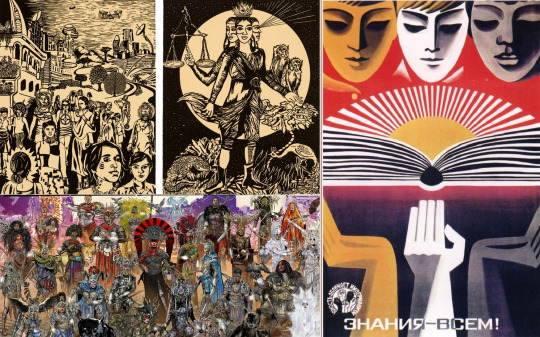
(Images counter-clockwise: cutout art representing Rokeya Sakhawat Hossain's "The Sultana's Dream" drawn by Chitra Ganesh, "Wonder Woman: Historia" by Kelly Sue DeConnick and Phil Jimenez, and a cover for Alexander Bogdanov's "Red Star")
One notable early example of Indian science fiction is Rokeya Sakhawat Hossain’s “Sultana’s Dream” (1905). Set in a future, women–dominated utopia called “Ladyland,” Sultana’s Dream is about the conflict between the women of Ladyland, who are the scientists of the country, and the men, who rebel against the women and form an army but are defeated by the science of the women and forced to retreat into purdah. A similar utopian sentiment appears in Tekumalla Raja Gopala Rao’s Vihanga Yanam (1910), in which the Indian woman Padmavati designs and creates a technologically–advanced submarine, not unlike Captain Nemo’s Nautilus, and travels to the bottom of the sea. She gathers an enormous amount of wealth from shipwrecks and uses this money to transform Indian into a techno–utopia - Women in Pre–1947 Chinese and Indian Horror Fiction and Film, by Jess Nevins
Red Star follows the journey of Leonid, a Bolshevik revolutionary who is offered the chance to go to Mars and, once there, encounters a utopian socialist society explicitly posited as the immediate, achievable future of humankind on Earth. (Bogdanov's) description of Martian society is at once located in humanity’s present and future—it is in the present day, but the Martians represent humanity’s immediate developmental end goal. Blood transfusion as a technique was one that Bogdanov not only described, but intended to implement among his own society, specifically with the intention of bringing about the socialist utopia described in his novel - Economic Circulations: Blood-Based Systems of Value in Alexander Bogdanov’s Red Star, by Virginia L.Conn
And the final one we're going with is taking a step back from the character's intent and history to laser focus on Diana as a character. Specifically, a public domain Wonder Woman, shut off from the rest of the DCU and the Justice League, and perhaps even shut off from Themyscira. Maybe for this one we can run with an angle more akin to takes where she's exiled, or something akin to the original backstory for America Chavez, who was explicitly designed to be Marvel's modern riff on Wonder Woman, where the utopian homeland was there and it matters but it's something she can't go back to, and can only carry with her as part of her dual heritage. The intent here is to push Diana closer to the knight-errant archetypes you see in pulp fiction, the cowboys and youxia / wuxia folk heroes and sword-and-sorcery wanderers striding their path across the world wherever it will take them (by no means am I suggesting sword-and-sorcery as an influence past this specific aspect, get rid of that stupid fucking sword by all means). Stripped of the superhero signifiers and context, even if still fundamentally one.
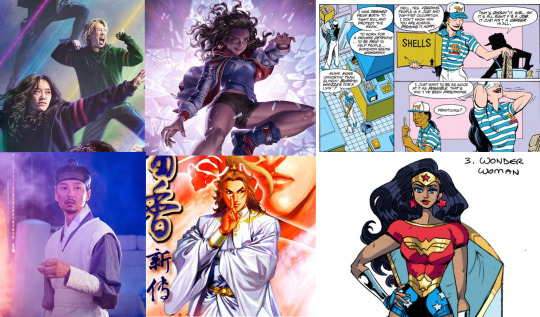
(Top images left-to-right: Do Ha-Na and Chu Mae-ok from The Uncanny Counter, America Chavez by Jung-Geun Yoon, Wonder Woman (1987) #75)
(Bottom images left-to-right: Heo Im from Live Up To Your Name, Chu Liuxiang, Wonder Woman by Mike Becker)
Wonder Woman as the Fantasy Knight-Errant Liberator. Like the pacifist take on the swordsman bandit seen in Chu Liuxiang, who only ever fights with a steel fan to block and parry attacks, robs from the rich to help the poor and solves mysteries with a cool head and a large network of friends and allies. Something like Heo Im from Live Up To Your Name, the superhumanly-skilled Joseon acupuncturist who is thrown across space and time into modern times to experience not just personal growth, but the thorough understanding of medicine necessary for him to literally write the book on it, who makes for a deeply compelling and versatile blend of cool, funny, kind and tragic as a protagonist. Or something like the Counters from The Uncanny Counter, who operate as superpowered agents of heaven in stopping and exorcising evil spirits who latch onto wicked and vulnerable humans and patching the wounds left by both, dealing with financial and social crimes and protecting victims of economic exploitation and injustice as much as they have grueling fistfights with possessed telekinetic serial killers, even to save them from themselves. Maybe some design cues from the Counters' striped hoodies or America Chavez, the dimension-hopping, star-spangled gay jock powerhouse who can go anywhere and do anything (and who suffers from the exact same problems as WW does in that they can't stop fiddling with her backstory and piling baggage that's actively detrimental to the character).
You take Diana, the teacher, redeemer and diplomat whose core strength is the concept of truth and her ability to see and expose it, who's out to dismantle all systems of violence and actively pursues social justice and forward-minded activism, who goes out looking for new experiences to better learn and understand the world around her and treats a minimum-wage gig serving tacos with unwavering and unselfconscious dedication and commitment that she uses to tackle a mythological and epic playing field.
Someone who faces forces of allegorical monstrosity and mythological metaphor and embodiments of bigotry. Someone who interfaces with politicians one hour and tends to soup kitchens in the next, who opens shelters and goes palling around with the Holiday Girls, someone who rides around on invisible jets and swims with sharks and turns enemies into friends. Someone who knows for a fact that a better way of living is possible because it's where she comes from. Take these ingredients and play around with them, modernize them, because Wonder Woman must be facing towards the future, and the intent to fashion a kinder, more loving, better one.
And hey, not only does she already have the perfect tool for the job in the lasso, but she's even got a distinct ride and animal companion to go around righting wrongs with and striding into the sunset with.
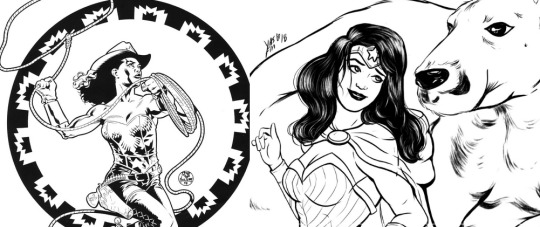
(Left-to-right: Justice Riders Wonder Woman by JH Williams, Jumpa art by Yasmín Flores Montañes)
#replies tag#superheroes#pulp heroes#dc comics#wonder woman#diana of themyscira#sci fi#diana prince#redesign
28 notes
·
View notes
Text
I’ve been told RWBY isn’t a happy story but I honestly I felt like it could have been lighter
It didn’t *have* to but it *could* have been, and that wouldn’t necessarily be a bad thing
But I do agree that it hasn’t been consistent with the direction it *has* taken
But part of me feels like also coming from some people who prefer the likes of Attack on Titan, which I’m not saying RWBY couldn’t be like that either
I just feel like a lot of fans are projecting their tastes and biases, which I’m just as guilty of, but the problem is a lot of people are dishonest about it
Especially it’s source materials are fairytales, folklore, and mythology, something that had been reimagined and reinterpreted by human civilization for centuries if not literally thousands of years.
I just think you can tell all kinds of stories with a world like RWBY and it’s characters
14 notes
·
View notes